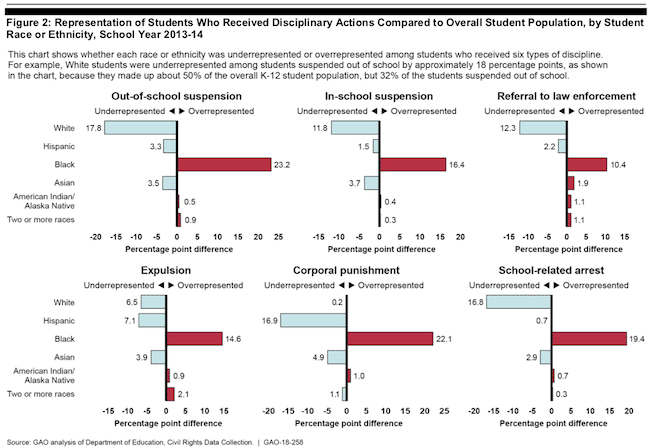Threat Assessment in Florida Schools: The US Secret Service Perspective


Now that the Marjory Stoneman Douglas Public Safety Commission’s initial report has been sent to the Florida Governor and to the leaders of the Florida House & Senate, I’d like to share a few of the recommendations that went into the report, recommendations that I was privileged to work on with the team from the National Threat Assessment Center (NTAC), a part of the United States Secret Service.
It’s an honor to work with Dr. Lina Alathari and the amazing team at NTAC. Dr. Alathari, who not only testified to the MSD Commission in July 2018 (see her presentation below) but the NTAC team was ready to help Florida with state-specific recommendations on school safety & threat assessment.
Here is a look at that collaboration. I am pleased to say that most if not all recommendations were included in the MSD Commission report. I’d love to get your feedback and comments.
The Marjory Stoneman Douglas Public Safety Commission
Behavioral Threat Assessment Recommendations
Presented by Commissioner Ryan Petty
Developed in collaboration with
The U.S. Secret Service National Threat Assessment Center
The scope of a behavioral assessment program in Florida’s K-12 schools should include identifying concerning behaviors displayed by current and former students and employees, assessing those who require intervention and managing their risk of violence or other unwanted outcomes. Consideration should also be given to future expansion of any state requirements to include institutions of higher education (IHEs).
Oversight
- The Florida Department Of Education (DOE) should be required to establish and maintain oversight for how the threat assessment process is designed and implemented across all Florida school districts. This includes, but is not limited to, establishing standards for training, membership on threat assessment teams (TATs), investigative procedures, and reporting requirements. An implementation deadline should be established.
- As part of establishing and maintaining oversight over the threat assessment process, DOE should be required to standardize documentation and assessment procedures statewide that are based on the latest research and best practices in the field of threat assessment. DOE must update those procedures on a continuing basis.
- Each school district should be responsible for ensuring that each individual school within its district is covered by a TAT, whether that team is coordinated at the district, school, or multi-school level. Each team must meet the standards established by the DOE while directing, managing, and documenting each threat assessment.
- DOE’s reporting requirements should include such things as the number of incidents referred to the TAT, investigations conducted, individuals deemed at-risk, and interventions used. When establishing the requirements, legislators should look to the Clery Act, which requires colleges and universities to maintain and disclose campus crime statistics and security information, for guidance.
- Every school should be required by law to promote the FortifyFL App by reminding students of the anonymous reporting tool at the beginning of each school year and at least quarterly throughout the year. FortifyFL App reminders should be conspicuously posted throughout the schools.
Department of Education Standardized Protocols
- Threat assessment program must include tools and protocols for identifying students of concern, assessing those who require intervention and managing their risk of violence or other unwanted outcomes. Threat Assessment Teams (TATs) should not only focus on the prevention of school violence, but on a range of at-risk student behaviors, including bullying, depression, suicidality, self-harm, and drug use, among others.
- All TATs should be comprised of specific static members from diverse disciplines, such as mental health and counseling, school administration, teaching staff, and law enforcement. If the TAT is based at the district level or multi-school level, then each individual school must have a designated TAT point of contact who will be a part of any threat assessment affecting that school. Other additional school personnel with direct knowledge of the assessed child and the child’s behavior should also be brought in on a case by case basis.
- TATs should be required to meet at least monthly and be proactive, not just reactive. Acting proactively includes looking for points of early intervention when students are exhibiting lower-levels of concerning behavior, continually assessing school climate, evaluating management resources and identifying new ones, as well as assessing anti-bullying efforts. (see Enhancing School Safety Using a Threat Assessment Model: An Operational Guide for Preventing Targeted School Violence)
- TATs should have a case-tracking system and protocols that document the assessment process. This would include requirements for responding to initial reports within a specified time frame and longer-term monitoring for the person of concern to ensure continued stability.
- When school is in session, TATs should be required to convene, in-person or by phone, within 24 hours of receiving a referral.
- When school is not in session, while TAT capabilities may have to be scaled down, the TAT must maintain continuity throughout school breaks to receive information on new cases and help monitor cases that require ongoing management.
Assessment Tools and Standards
- All behavioral threat assessments should be tiered with higher tiers reserved for the more concerning conduct. While a threat assessment instrument will allow for consistency across districts, as well as information-sharing and documentation, the room should also be allotted for establishing situational context beyond what may be available in the instrument. TATs should be encouraged to capture and respond to the concern of all bystanders, even if the threat assessment instrument designates a situation as low-risk.
- Each threat assessment should focus on identifying prohibited and concerning behaviors, not just specific threats of harm. Maintaining a low-threshold of concern to facilitate early intervention is key to prevention. (see Enhancing School Safety Using a Threat Assessment Model: An Operational Guide for Preventing Targeted School Violence)
- Each TAT must proactively identify potential resources within the schools and surrounding communities to which the child can be referred. This could include mental health treatment providers, counselors, mentorship programs, or social services, among others. This list should be revisited at least annually, and points of contact should be established and verified.
- TATs and Individualized Education Program (IEP) committees must coordinate information and courses of action regarding Exceptional Student Education (ESE) students.
Enforcement and Training
- DOE or school districts should provide specialized training to TAT members on topics such as behavioral indicators, conducting thorough threat assessments, and risk management strategies.
- School districts should provide mandatory training that is customized for those who may report concerning behaviors, including all school personnel, parents, and fellow students. This training should be updated or re-enforced on a regular basis. The goal of such training should be to clarify what types of concerning behaviors these persons might observe, and to whom those concerns should be reported.
- School personnel should be trained on commonly misunderstood issues related to FERPA.
- Reporting observed behaviors to the TAT should be mandatory for all school personnel, and sanctions should be identified for non-reporting.
- Efforts should be made to address the culture of under reporting that incentivizes schools to minimize their response to concerning situations.



